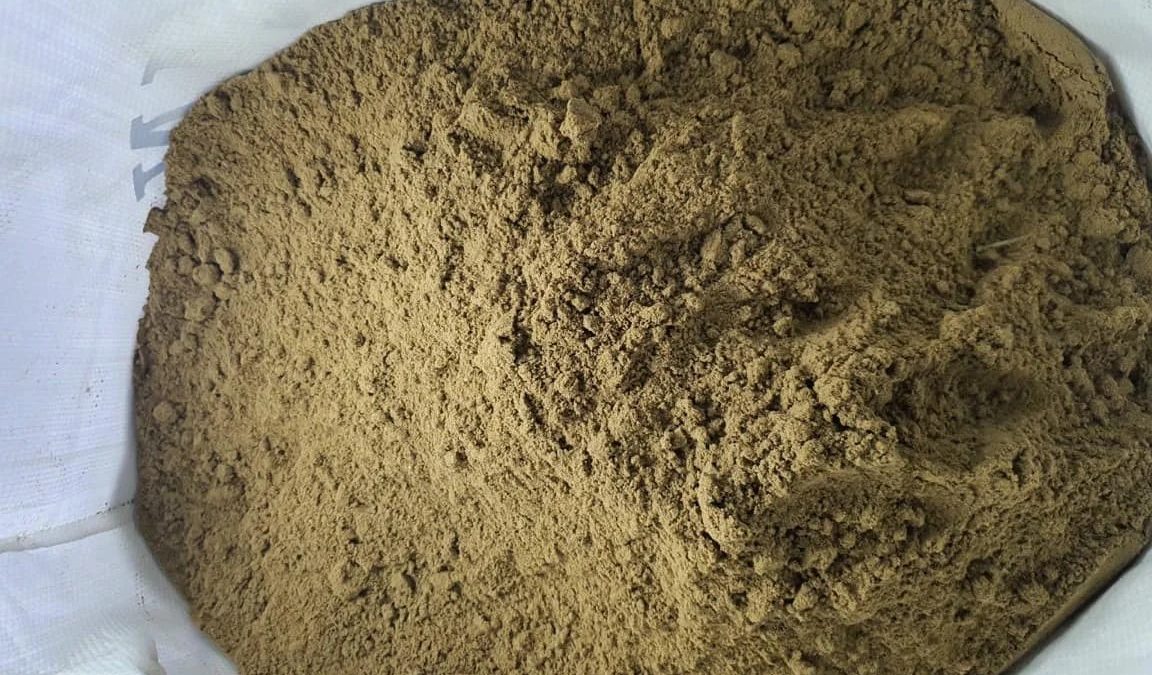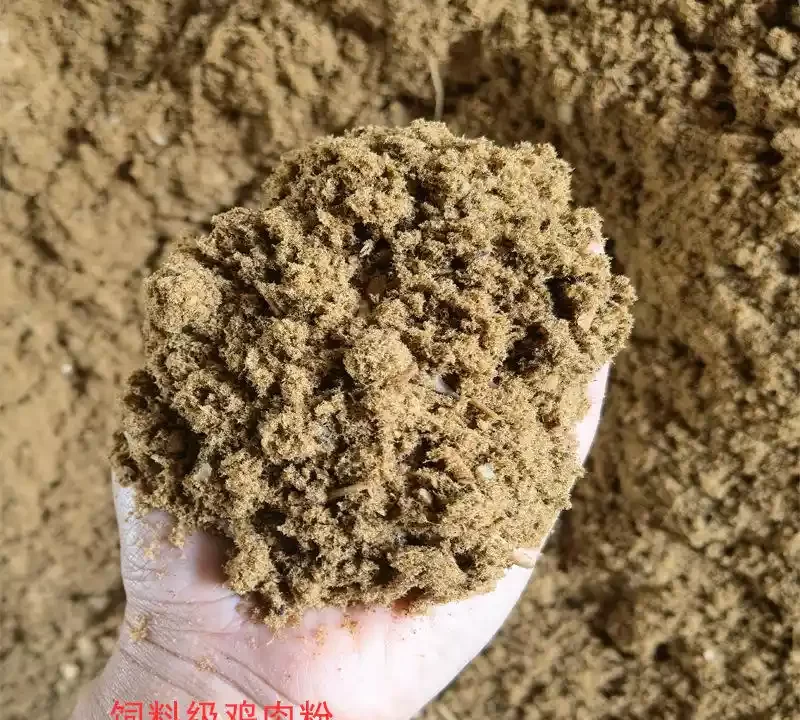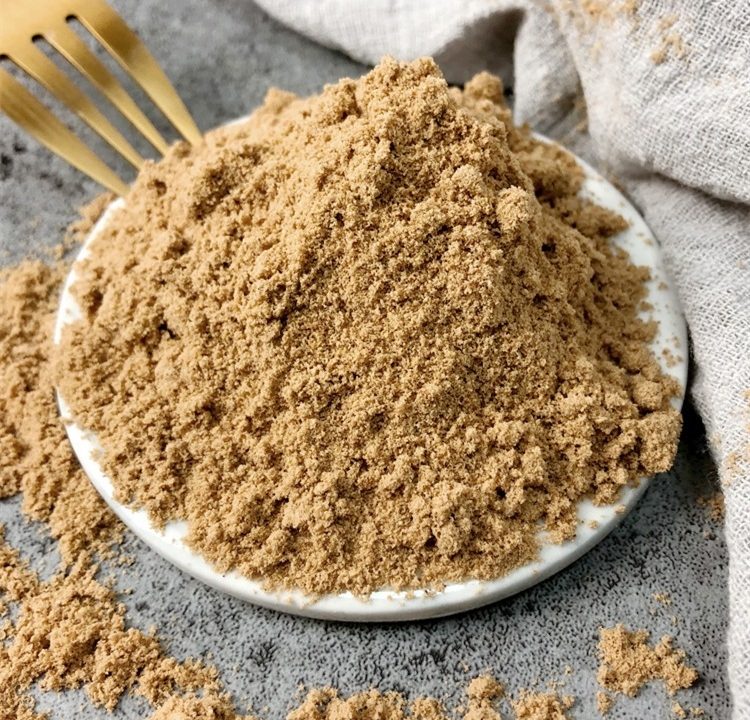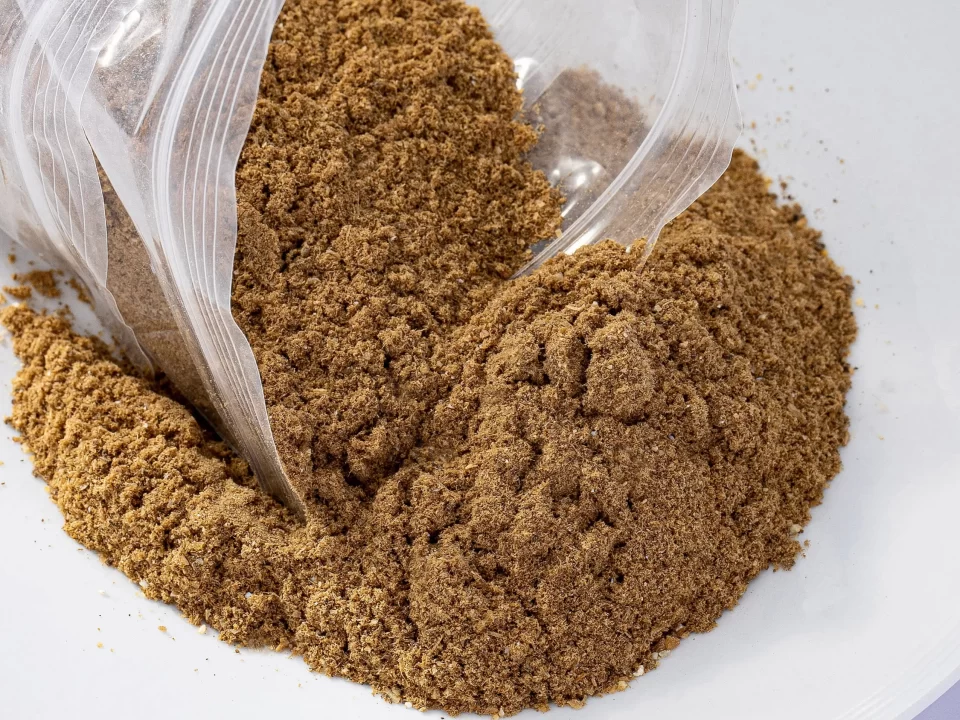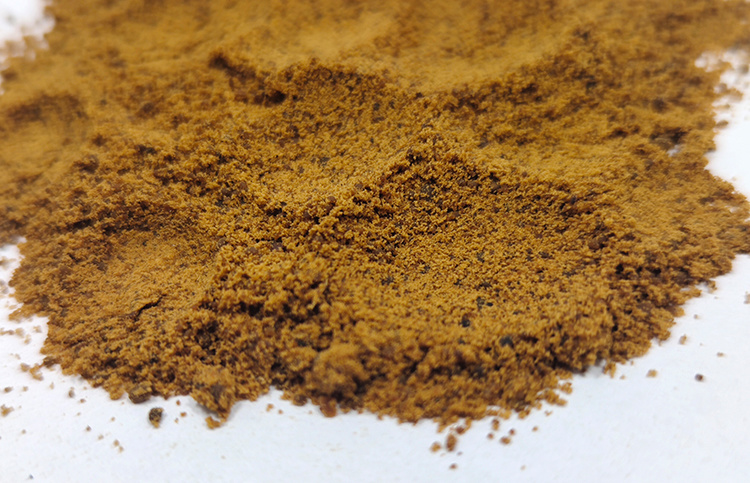Chicken Meal 60% Powder for Animal Feed Additive

Studies on Protein and Amino Acid Digestibility of Chicken Meal Powder in Pet Species
October 10, 2025
High Protein Fish Meal Powder for Advanced Animal Nutrition
October 25, 2025Chicken Meal 60% Powder for Animal Feed Additive: A Deep Scientific and Technical Analysis
The Crucial Role of Processed Animal Proteins in Modern Animal Nutrition
The utilization of Chicken Meal (CM), a highly concentrated source of protein and energy derived from poultry by-products, represents a cornerstone of sustainable and efficient animal nutrition globally. In the context of a finite supply of traditional protein sources like fish meal and the growing demand for plant-based ingredients to feed a burgeoning human population, rendered animal products offer a critical, high-quality, and circular solution. The product under scrutiny, a Chicken Meal 60% Powder, specified by its rigorous quality parameters—$\mathbf{60\%}$ minimum Crude Protein and an exceptional $\mathbf{95\%}$ minimum Pepsin Digestibility—demands a comprehensive scientific examination to fully appreciate its value and the sophisticated technology underpinning its production. This analysis will delve into the source materials, the biochemical principles of the rendering process, the nutritional significance of its guaranteed analysis, and its application across various livestock and aquaculture sectors.
Deconstruction of Raw Material Sourcing and Bioconversion
The commitment that the raw materials are $\mathbf{100\%}$ from by-products of chicken is fundamentally important, establishing the product’s identity and its exclusion from mammalian and other non-poultry sources. The stated components—residual bone, skin, fat, offal, and meat after the removal of edible part—constitute a heterogenous matrix rich in various macro- and micronutrients. Scientifically, the composition dictates the final nutritional profile. The presence of meat and offal ensures a high concentration of true muscle protein, which is rich in essential amino acids like lysine, methionine, and threonine, crucial for muscle accretion in target animals. Conversely, the inclusion of bone and skin contributes significantly to the structural proteins, primarily collagen and elastin, and the mineral fraction.
Collagen, while a protein, has an amino acid profile distinct from muscle protein, being particularly high in glycine, proline, and hydroxyproline, and critically low in tryptophan and sulfur-containing amino acids. The successful rendering process must manage this amino acid variability, achieving a final product where the combined protein fraction still delivers a highly bioavailable and balanced amino acid profile suitable for feed formulation. The $\mathbf{60\%}$ minimum protein threshold suggests an optimized raw material mix where the yield of muscle and organ tissue protein significantly outweighs the lower-quality protein from connective tissues, distinguishing it from lower-grade by-product meals.
The presence of fat in the raw materials is key, as it represents a significant energy source. The residual lipids, composed primarily of triglycerides, are integrated into the meal post-processing, contributing to the overall metabolizable energy (ME) content, making Chicken Meal an ‘all-in-one’ protein and energy concentrate, unlike defatted plant proteins. The quality of this fat, however, is highly sensitive to the initial handling of the raw material. Any delays or inadequate chilling can trigger enzymatic hydrolysis, primarily by lipases, which liberates Free Fatty Acids (FFA). This degradation is a direct precursor to oxidative rancidity, reducing palatability and contributing to the $\mathbf{FFA}$ constraint in the final product specification. The scientific challenge begins at the collection point: preserving the chemical integrity of the by-products before the rendering process even begins is paramount to achieving the final quality metrics.
The Science of Rendering: Transforming Substrates into Bioavailable Nutrients
The claim of advanced equipment, scientific processing, and high temperature sterilization encapsulates the complex physico-chemical and thermal processes known as rendering. This process is not merely a method of drying; it is a sophisticated bioconversion that achieves several critical goals simultaneously:
1. Thermal Hydrolysis and Sterilization
The application of high temperature sterilization is central to both product safety and nutritional quality. From a safety perspective, the thermal treatment must adhere to regulatory standards to ensure the complete destruction of pathogenic bacteria, including Salmonella and E. coli, and to inactivate viruses. The combination of specific temperature, pressure, and duration—often exceeding $130^\circ\text{C}$ for a defined period—is calculated based on the $F_0$ value (thermal lethality) to achieve a scientifically validated reduction in microbial load.
Nutritionally, this heat application acts as a process of thermal hydrolysis. Proteins, which exist as complex, folded polypeptide chains (long-chain organics), are partially denatured and hydrolyzed. This denaturation exposes the peptide bonds to further breakdown and the digestive enzymes of the target animal. Crucially, the process involves the decomposition of long-chain to short-chain components. In the case of protein, this means partial hydrolysis into shorter peptides and free amino acids. For fat, heat helps separate the lipid phase from the protein-mineral matrix, but it can also induce thermal oxidation if not carefully controlled, which feeds back into the FFA and oxidative stability discussion. The controlled thermal treatment serves to make the organic material more easily absorbed by increasing the exposure of chemical bonds to enzymatic action in the animal’s gastrointestinal tract, directly leading to the high $\mathbf{95\%}$ Pepsin Digestibility observed.
2. Physical Separation and Drying
The rendering process physically separates the three main fractions: the water (which is evaporated), the fat (tallow or grease), and the solids (the protein-mineral meal). Effective dewatering and drying are essential to meet the strict $\mathbf{8\%}$ maximum $\mathbf{Moisture}$ content. Low moisture is the primary mechanism for ensuring the final product’s microbial and chemical stability, directly correlating to a low water activity ($\mathbf{a_w}$), which inhibits spoilage and mold growth, thereby extending shelf life without the reliance on excessive chemical preservatives. The milling and pulverization into a powder further increase the surface area, enhancing homogeneity and mixing properties in compound feeds, which is a technical requirement for high-throughput feed manufacturing.
Quantitative Nutritional Analysis: Protein Quality and Digestibility
The core value proposition of this product lies in its $\mathbf{60\%}$ minimum Crude Protein and its outstanding $\mathbf{95\%}$ minimum Pepsin Digestibility.
The $60\%$ Crude Protein Benchmark
A $60\%$ crude protein content places this Chicken Meal in the highest tier of commercial animal protein ingredients, often rivaling or exceeding high-grade fish meal. Crude protein is determined by the Kjeldahl or combustion method (measuring total nitrogen, then multiplying by a factor, typically 6.25). The high concentration means the ingredient is highly valuable for formulating nutrient-dense diets, particularly for young, fast-growing monogastrics (chickens, swine) and in aquaculture, where high protein, high energy feeds are essential for efficient growth and low Feed Conversion Ratios (FCR).
However, high crude protein alone is insufficient; its quality and bioavailability are the ultimate determinants of nutritional efficacy. The amino acid profile, as discussed, is a composite of muscle and connective tissue proteins. For example, while CM is an excellent source of non-essential amino acids that are precursors for metabolic pathways, its methionine and cysteine content might be higher than soybean meal, but its tryptophan content may be limiting relative to an ideal standard. Feed formulators must, therefore, precisely characterize the amino acid content of this specific CM lot and apply the concept of Ideal Protein to accurately balance the diet using crystalline amino acids.
The Significance of $\mathbf{95\%}$ Pepsin Digestibility
Pepsin digestibility is the single most critical quality assurance parameter for processed animal proteins. Pepsin, an endopeptidase found in the stomach, models the initial stage of protein digestion in monogastric animals. A $\mathbf{95\%}$ minimum value is an exceptional standard, indicating that $95\%$ of the crude protein is rendered soluble under simulated gastric conditions.
Scientific Interpretation: This high score is a direct testament to the efficacy of the scientific processing and thermal hydrolysis. Insufficient heat treatment would leave complex proteins undenatured and inaccessible to pepsin, resulting in a lower score. Conversely, over-processing (excessive heat, temperature, or duration) can lead to the formation of cross-linkages, such as Maillard reaction products (non-enzymatic browning between reducing sugars and amino acid side chains, particularly lysine). These reactions render amino acids chemically unavailable—a process known as protein damage—and would also result in a lower pepsin digestibility score, despite the material being sterilized. The $95\%$ value confirms that the rendering technology employed has been optimized to maximize pathogen destruction while simultaneously minimizing protein damage, achieving the ideal balance between safety and nutritional quality. This high digestibility translates directly to superior true amino acid bioavailability in the animal.
Lipid Quality, Stability, and the Role of Free Fatty Acids
While the overall fat content is not specified as a guaranteed minimum, the raw material composition implies a significant energy contribution. The stated $\mathbf{FFA}$ (Free Fatty Acid) content of $\mathbf{10\%}$ maximum is a crucial parameter for lipid quality and feed performance.
The Chemistry of FFA and Lipolysis
Free Fatty Acids are liberated from triglycerides (the primary form of fat) through lipolysis, a hydrolysis reaction catalyzed by the enzyme lipase or by heat. A high FFA content ($>10\%$) is typically indicative of:
-
Poor Raw Material Handling: The raw by-products were stored for too long or at too high a temperature before rendering, allowing natural lipases to break down the fat.
-
Inadequate Processing: Incomplete inactivation of lipases during rendering, though this is less common with high-temperature sterilization.
-
Hydrolysis During Storage: Storage under high moisture or temperature conditions can continue the hydrolysis process.
High FFA content has several negative nutritional consequences. Free fatty acids are more susceptible to oxidation (rancidity) than intact triglycerides. Oxidized fats produce unpleasant, volatile compounds (e.g., aldehydes, ketones) that significantly reduce the palatability of the final feed, leading to reduced feed intake. Furthermore, the presence of oxidation products can consume fat-soluble vitamins (like $\mathbf{Vitamin\ E}$) within the feed, acting as an anti-nutritional factor. The $10\%$ maximum target sets a benchmark for the freshness of the raw material and the care taken during the initial stages of collection and processing, ensuring the lipid energy is delivered in a highly stable and palatable form.
Moisture and Fiber
The $\mathbf{8\%}$ maximum $\mathbf{Moisture}$ content, as discussed, is the primary driver for achieving a low water activity ($\mathbf{a_w} < 0.65$), guaranteeing long-term shelf stability and microbiological safety.
The $\mathbf{2\%}$ maximum $\mathbf{Fiber}$ content (Crude Fiber) is a compositional confirmation of the product’s animal origin. Animal products, being muscle, bone, and connective tissue, naturally contain negligible amounts of cellulose or lignin, which constitute crude fiber. This low figure highlights that the meal is an incredibly dense source of protein and energy with very little non-digestible organic matter, contrasting sharply with plant-based protein meals.
The Mineral Matrix: Understanding the Ash Content
The $\mathbf{20\%}$ maximum $\mathbf{Ash}$ content represents the total inorganic mineral residue remaining after complete combustion of the meal. This high mineral fraction is a direct consequence of the inclusion of bone in the raw material mix.
Calcium and Phosphorus Dynamics
In Chicken Meal, the ash is overwhelmingly composed of Calcium (Ca) and Phosphorus (P), present largely as tricalcium phosphate (Ca3(PO4)2) derived from the skeletal structure. This makes CM a powerful source of macro-minerals in addition to protein and energy.
The scientific value of the Ash component lies in the Ca:P ratio. A typical bone structure yields a highly bioavailable Ca:P ratio often near 2:1. Unlike plant-based phosphorus, which is sequestered as phytate and is poorly utilized by monogastrics without the addition of phytase enzymes, the phosphorus in CM is almost entirely non-phytate phosphorus (NPP) and thus highly bioavailable (often exceeding 70% digestibility).
This provides a dual benefit:
-
It is an essential source of minerals for bone growth and metabolic function.
-
It reduces the need for expensive inorganic phosphate supplements (e.g., dicalcium phosphate) in the final feed formulation.
However, the high mineral content also mandates careful formulation; in certain high-inclusion diets, the natural high Ca content of CM can potentially interfere with the absorption of other trace minerals. Therefore, the $\mathbf{20\%}$ Ash figure is not merely a constraint but a piece of compositional data that allows formulators to accurately model the mineral input.
Palatability Enhancement and Functional Applications
The claim that the processing aids in decomposition of long-chain to short-chain components, thereby greatly improving the palatability of animals and the absorption rate, links the chemical transformation to the biological response.
Linking Hydrolysis to Palatability
The partial hydrolysis of protein into short-chain peptides and free amino acids (e.g., glutamic acid, glycine, specific di- and tri-peptides) is known to enhance the flavor profile and act as a potent chemosensory stimulus for many animals, particularly carnivores and omnivores like fish, shrimp, and pigs. This “taste” or “umami” factor is a key functional benefit, making the feed more attractive and ensuring higher feed intake, especially in stressed or newly weaned animals. In aquaculture, the high palatability is critical for rapid feed acceptance and reducing feed waste in aquatic environments.
Application Across Species
-
Poultry and Swine: CM $60\%$ provides a source of homologous protein—protein derived from the same species—which is generally well-recognized and efficiently metabolized. Its high digestibility and favorable amino acid profile (especially lysine and threonine) make it an ideal substitute for imported soybean meal or lower-grade meat and bone meals, contributing significantly to the protein pool and reducing the reliance on individual crystalline amino acids.
-
Aquaculture: For fast-growing species (e.g., shrimp, specific fish like tilapia or salmonids), CM serves as a cost-effective, sustainable, and highly palatable substitute for premium fish meal. The combination of $60\%$ protein, high ME from residual fat, and excellent Pepsin Digestibility makes it an essential bridge between marine and terrestrial protein sources, particularly critical given the volatility in global fish meal supply.
-
Pet Food: Due to its superior $\mathbf{95\%}$ digestibility and high protein concentration, CM is a premium ingredient in high-performance dog and cat foods, offering highly bioavailable protein and essential fatty acids for coat and skin health.
Concluding Scientific Assessment and Quality Assurance
The Chicken Meal 60% Powder is a product of sophisticated, scientifically controlled rendering technology. The specified parameters (Protein $\mathbf{60\%}$ min, Pepsin Digestibility $\mathbf{95\%}$ min, Moisture $\mathbf{8\%}$ max, FFA $\mathbf{10\%}$ max, Ash $\mathbf{20\%}$ max) collectively define a highly stable, exceptionally digestible, and nutritionally concentrated ingredient. Achieving these metrics requires stringent Hazard Analysis and Critical Control Points ($\mathbf{HACCP}$) management at every stage, from the hygienic collection of fresh raw material (to control FFA) to the precise thermal treatment (to ensure $95\%$ digestibility and sterilization) and the final drying/milling process (to guarantee $8\%$ moisture).
The product successfully converts a complex agricultural by-product into a form that maximizes the bio-utilization of its inherent nutrients—protein, energy, and highly available $\mathbf{Ca}/\mathbf{P}$. This utilization closes the loop in the agricultural cycle, supporting both economic efficiency in feed production and global sustainability goals. The scientific value of this $60\%$ CM lies not just in its crude nutrient content, but in the demonstrated $\mathbf{95\%}$ bioavailability, a marker of excellence in the science and engineering of feed ingredient processing. Its application represents a sound scientific choice for the modern feed formulator seeking high-performance, cost-effective, and safe protein.


